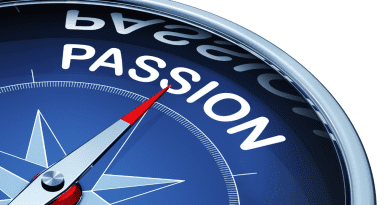Arousal Theory in Motivation: How to Get Psyched Up and Motivated
Do you ever feel like you just can’t get motivated to do anything? You’re not alone. A lot of people struggle with motivation at some point in their lives. Luckily, there is a psychological theory that can help! The arousal theory in motivation states that people are more likely to be motivated when they are aroused. This means that you need to get your body and mind pumped up in order to achieve optimal levels of productivity. In this blog post, we will discuss how arousal theory works and how you can use it to get psyched up and motivated!
What Is Arousal Theory?
Arousal theory is based on the principle that people are more likely to be motivated when they are in a state of arousal. This means that you need to get your body and mind pumped up in order to achieve optimal levels of productivity. There are two main ways to do this:
– through external means, such as music, caffeine, or other stimulants;
– or through internal means, such as setting realistic goals, focusing on positive motivation, and using self-talk.
External arousal is often more effective in the short term, while internal arousal is more sustainable in the long term. However, both methods can be useful depending on your goal. If you’re looking for a quick burst of energy to get through a tough workout, external arousal may be the way to go. If you’re trying to change your mindset and develop more sustainable motivation, internal arousal is probably a better option.
How Arousal Affects Performance
Arousal theory is often used to explain the relationship between stress and performance. When we are stressed, our body releases adrenaline and other hormones that prepare us for action. This ‘fight or flight’ response gives us the energy and focus we need to perform at our best. However, if we are too stressed, our performance can suffer. This is because our body can only handle so much arousal before it starts to have negative effects.
So, how do you know if you’re in the optimal zone of arousal? The answer is different for everyone, but there are some general guidelines you can follow. Generally speaking, you want to be just aroused enough to feel energetic and focused, but not so aroused that you feel anxious or stressed. This optimal zone of arousal is often referred to as the ‘flow state’.
External Arousal:
– Music: Listening to upbeat music can help you get in the zone and push through a tough workout.
– Caffeine: A cup of coffee or tea can give you the boost you need to power through a tedious task.
– Other stimulants: If you’re seeking more extreme arousal, you can try using drugs. However, this is not recommended as it can lead to addiction and other negative consequences.
Internal Arousal:
– Setting realistic goals: Having a clear goal to focus on can help you stay motivated even when you don’t feel like it.
– Focusing on positive motivation: Reminding yourself of why you’re doing something can help you push through when you’re feeling low.
– Using self-talk: Talking to yourself in a positive way can help increase your motivation and confidence.
How to Use Arousal Theory to Get Motivated
Now that you know how arousal theory works, how can you use it to get motivated? Here are a few tips:
– Find what works for you: Everyone is different, so it’s important to find an arousal method that works for you. If external arousal works better for you, go for it! If internal arousal is more your style, that’s fine too.
– Experiment: Don’t be afraid to experiment with different arousal methods. You may be surprised at what works for you.
– Be consistent: The key to using arousal theory is to be consistent with it. If you only use it when you’re feeling low, it won’t be as effective. Try to incorporate it into your daily routine so that it becomes a habit.
Related Article: 11 Tips on How to Increase Energy Naturally
Drawbacks of the Arousal Theory
While arousal theory can be a helpful tool for motivation, it’s important to keep in mind that it has its limitations. For one, it doesn’t take into account individual differences. What works for one person may not work for another. Additionally, arousal theory doesn’t always lead to sustainable motivation. If you rely too heavily on external arousal, you may find that your motivation starts to flag when the arousal is gone. Internal arousal is a more sustainable option, but it can be more difficult to maintain in the long term.
Overall, arousal theory is a helpful tool for understanding motivation. However, it’s important to remember that it has its limitations. Use it as a tool to help you find what works for you, but don’t be afraid to experiment. And most importantly, be consistent! The more you use arousal theory, the more effective it will be.
Conclusion:
If you’re struggling with motivation, arousal theory may be able to help. By understanding how arousal works and finding what works for you, you can get psyched up and motivated!
So there you have it! Arousal theory in motivation is a great way to get motivated and achieve your goals. Be sure to try out both external and internal arousal methods to see what works best for you. And always remember to keep your eye on the prize!
What do you think? Do you find arousal theory helpful? What are your favorite arousal methods? Let us know in the comments!
Thanks for reading.
Get more daily on your newsfeed at the Undefeated Motivation FB page or Undefeated Motivation IG page.




